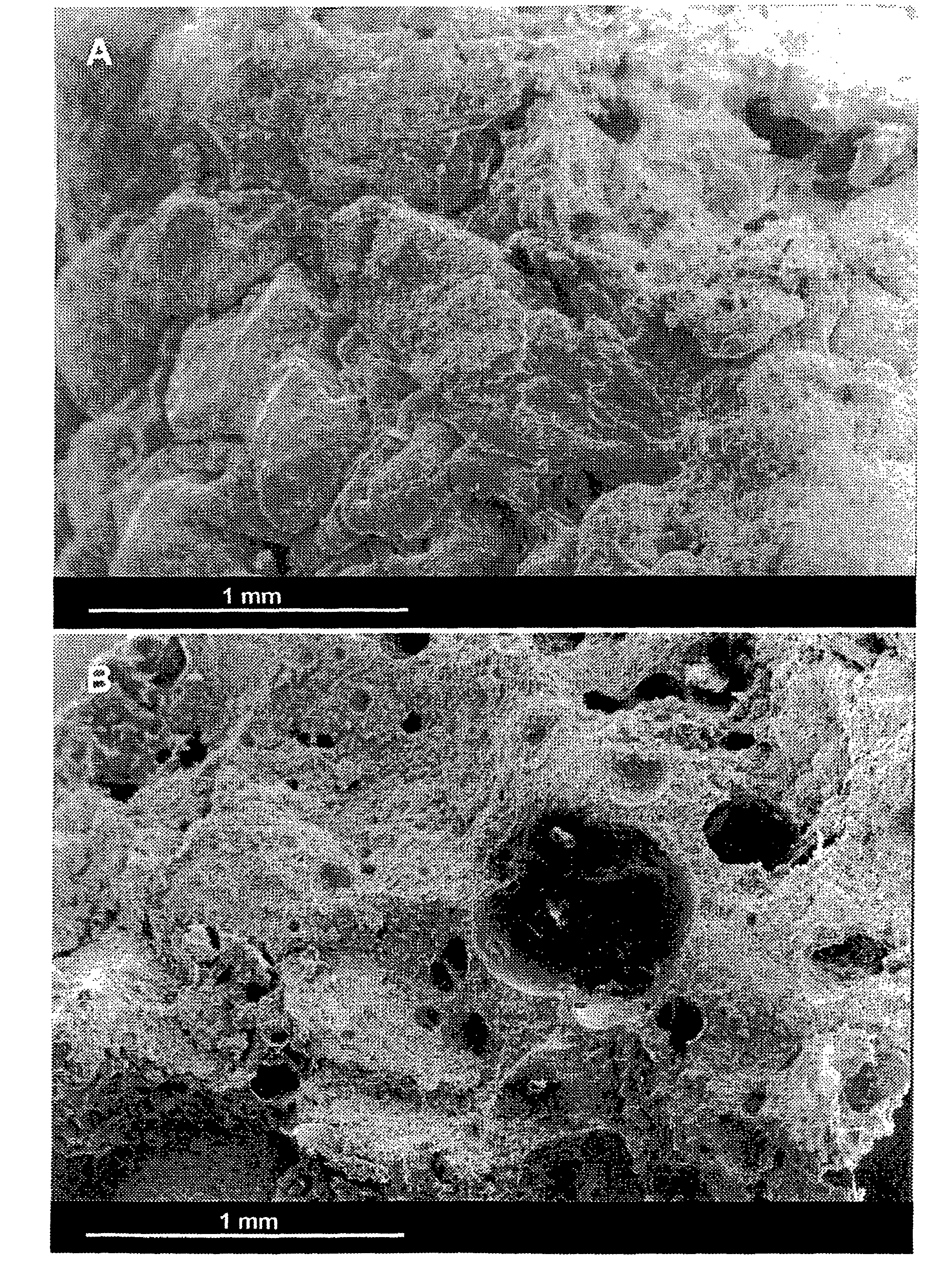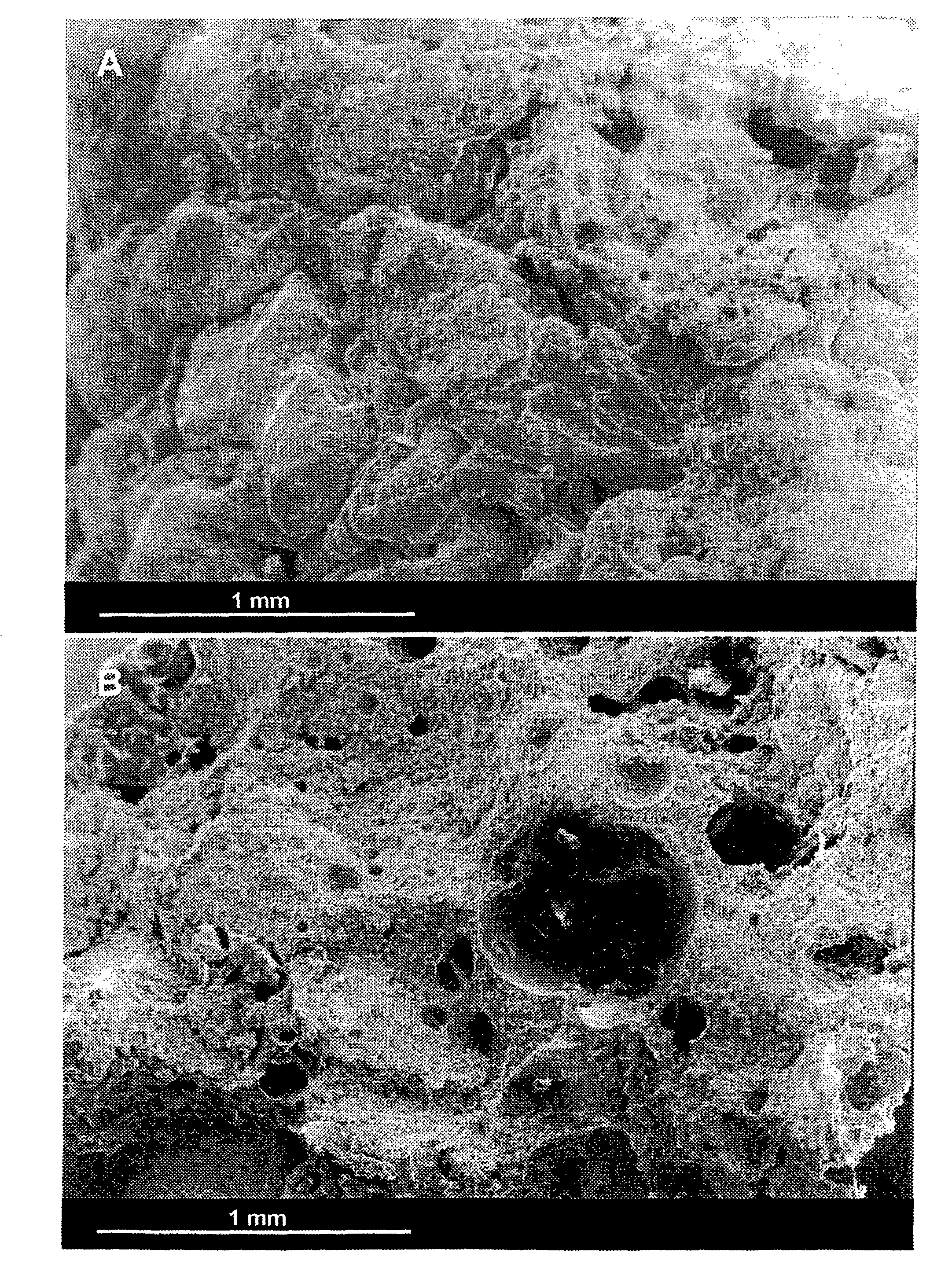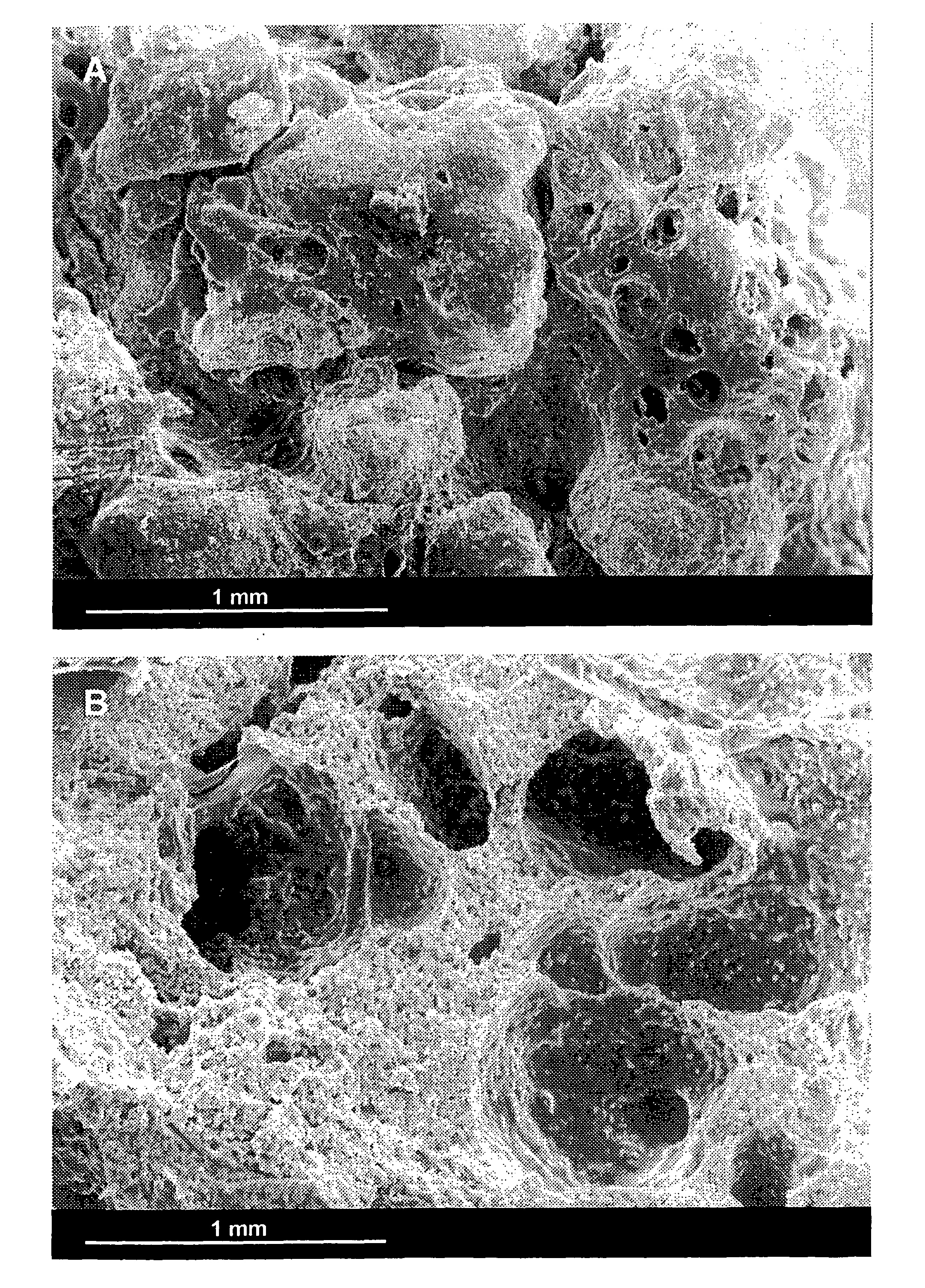Moldable biomaterial for bone regeneration
a biomaterial and bone technology, applied in the field of moldable biomaterials for bone regeneration, can solve the problems of increasing affecting the quality of bone grafts, and limited availability of autogenous bone grafts, so as to reduce the burden on the organism, reduce the content of polymer, and increase the porosity of moldable biomaterials
- Summary
- Abstract
- Description
- Claims
- Application Information
AI Technical Summary
Benefits of technology
Problems solved by technology
Method used
Image
Examples
example 1
Manufacturing of Active Agent Coated Particulate Solid Porous Material
[0192]This examples uses beta-TCP coated granules as solid porous material and rhGDF-5 as active agent. Alternatives can be prepared in analogy.
[0193]The raw materials have to be sterilized in an appropriate way. Initially 500 mg beta-TCP (500-1000 μm granule size) were placed in a dry form in a 2R-glass. The stock solution of rhGDF-5 (3.4 mg / ml in 10 mM HCl) was diluted to 0.54 μg / ml with the means of the corresponding coating buffer. 475 μl of the rhGDF-5 solution obtained in that manner were pipetted on the beta-TCP and absorbed. The damp granulate was incubated for 1 hour at 25° C. and then lyophilized. Other examples of coating beta-TCP are described in WO 03 / 043673 and PCT / EP2005 / 006204.
example 2
Manufacturing of the Biodegradable Paste Material
[0194]Initially polymer (RG502H; PLGA; polymer composition: 48-52 mol % D,L-Lactide and 48-52 mol % Glycolide; inherent viscosity: 0.16-0.24 dl / g, 25° C., 0.1% in CHCl3; (Boehringer, Ingelheim) was added to the obligate amount of organic solvent (PEG 400) in a porcelain crucible. These two components were homogenised and were heated at a temperature of approximately 60° C. until the polymer was completely solved in the organic solvent. Subsequently the inorganic filler (beta-tricalcium phosphate powder) and optionally other excipients (e.g. degradation regulating agents like carboxymethylcellulose sodium salt) were dispersed in the polymeric solution.
example 3
In-situ Hardening Moldable Biomaterial Comprising a Porous Calcium ceramic
[0195]The coated beta-tricalcium phosphate granules of example 1 and the biodegradable paste material of example 2 were homogenized in a crucible by gentle mixing using for example a sterile spatula to form a coherent and moldable material. Different implant materials with varying ratios of beta-tricalcium phosphate granules to polymer paste (wt % / wt %) were prepared: a) a ratio beta-TCP: polymer paste of 1:1.3, b) of 1:1.4, c) of 1:1.5 and d) 1:1.7.
[0196]For all experiments requiring a biodegradable paste material or a moldable biomaterial in its hardened shape, the material was transferred into wells of a 48-well plate (250-300 mg / well). The well plate was then incubated in a bath containing PBS-buffer, whereby the temperature was fixed at 37° C. The bath was constantly shaked applying a frequency of 150 min−1.
PUM
| Property | Measurement | Unit |
|---|---|---|
| particle size | aaaaa | aaaaa |
| particle size | aaaaa | aaaaa |
| particle size | aaaaa | aaaaa |
Abstract
Description
Claims
Application Information
 Login to View More
Login to View More - R&D
- Intellectual Property
- Life Sciences
- Materials
- Tech Scout
- Unparalleled Data Quality
- Higher Quality Content
- 60% Fewer Hallucinations
Browse by: Latest US Patents, China's latest patents, Technical Efficacy Thesaurus, Application Domain, Technology Topic, Popular Technical Reports.
© 2025 PatSnap. All rights reserved.Legal|Privacy policy|Modern Slavery Act Transparency Statement|Sitemap|About US| Contact US: help@patsnap.com



